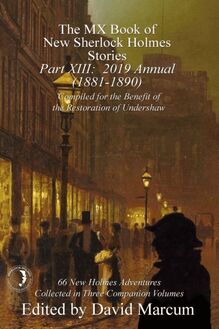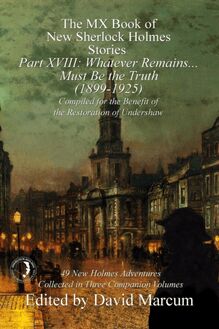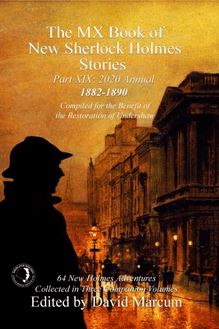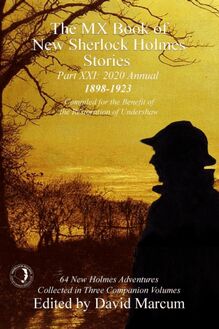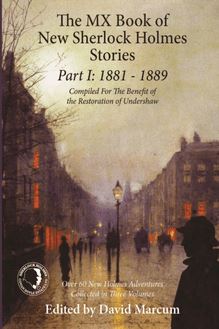-
 Univers
Univers
-
 Ebooks
Ebooks
-
 Livres audio
Livres audio
-
 Presse
Presse
-
 Podcasts
Podcasts
-
 BD
BD
-
 Documents
Documents
-
- Cours
- Révisions
- Ressources pédagogiques
- Sciences de l’éducation
- Manuels scolaires
- Langues
- Travaux de classe
- Annales de BEP
- Etudes supérieures
- Maternelle et primaire
- Fiches de lecture
- Orientation scolaire
- Méthodologie
- Corrigés de devoir
- Annales d’examens et concours
- Annales du bac
- Annales du brevet
- Rapports de stage
La lecture à portée de main
Vous pourrez modifier la taille du texte de cet ouvrage
Découvre YouScribe en t'inscrivant gratuitement
Je m'inscrisDécouvre YouScribe en t'inscrivant gratuitement
Je m'inscrisEn savoir plus
Vous pourrez modifier la taille du texte de cet ouvrage
En savoir plus

Description
Informations
| Publié par | Andrews UK |
| Date de parution | 03 mars 2020 |
| Nombre de lectures | 0 |
| EAN13 | 9781787055124 |
| Langue | English |
| Poids de l'ouvrage | 1 Mo |
Informations légales : prix de location à la page 0,0674€. Cette information est donnée uniquement à titre indicatif conformément à la législation en vigueur.
Extrait
First edition published in 2019
Copyright © 2019 David Marcum
The rights of the individuals listed in the Copyright information section to be identified as the authors of this work have been asserted by them in accordance with the Copyright, Designs, and Patents Act 1988.
All rights reserved. No reproduction, copy, or transmission of this publication may be made without express prior written permission. No paragraph of this publication may be reproduced, copied, or transmitted except with express prior written permission or in accordance with the provisions of the Copyright Act 1956 (as amended). Any person who commits any unauthorised act in relation to this publication may be liable to criminal prosecution and civil claims for damage.
All characters appearing in this work are fictitious or used fictitiously. Except for certain historical personages, any resemblance to real persons, living or dead, is purely coincidental. Any opinions expressed herein are those of the authors and do not necessarily represent those of MX Publishing or any other entity.
2020 digital version converted and distributed by Andrews UK Limited
www.andrewsuk.com
Published in the UK by MX Publishing
335 Princess Park Manor, Royal Drive, London, N11 3GX
www.mxpublishing.com
David Marcum can be reached at:
thepapersofsherlockholmes@gmail.com
Cover design by Brian Belanger
www.belangerbooks.com and www.redbubble.com/people/zhahadun
Copyright information
“Sherlock, Mycroft, and Me” ©2019 Kareem Abdul-Jabbar. All Rights Reserved. First publication, original to this collection.
“The Case of the Ivy-Covered Tomb” ©2019 S.F. Bennett. All Rights Reserved. First publication, original to this collection.
“The Witch of Ellenby” ©2019 Thomas A. Burns, Jr.. All Rights Reserved. First publication, original to this collection.
“Death in The House of the Black Madonna” ©2019 Nick Cardillo. All Rights Reserved. First publication, original to this collection.
“The Murderous Mercedes” ©2019 Harry DeMaio. All Rights Reserved. First publication, original to this collection.
“The Winterbourne Phantom” ©2005, 2019 M.J. Elliott. All Rights Reserved. First publication of text script in this collection. Originally broadcast on radio on April 24, 2005 as Episode No. 60 of The Further Adventures of Sherlock Holmes .
“Stories, Stepping Stones, and the Conan Doyle Legacy” ©2019 Steve Emecz. All Rights Reserved. First publication, original to this collection.
“The Adventure of the House Abandoned” ©2019 Arthur Hall. All Rights Reserved. First publication, original to this collection.
“The Cassandra of Providence Place” ©2019 Paul Hiscock. All Rights Reserved. First publication, original to this collection.
“The Adventure of the Lighthouse on the Moor” ( A Poem ) ©2019 Christopher James. All Rights Reserved. First publication, original to this collection.
“The Adventure of the Fair Lad” ©2019 Craig Janacek. All Rights Reserved. First publication, original to this collection.
“All Supernatural or Preternatural Agencies are Ruled Out as a Matter of Course” ©2019 Roger Johnson. All Rights Reserved. First publication, original to this collection.
“The Cunning Man” © 2019 Kelvin Jones. All Rights Reserved. This story originally appeared in a substantially different non-Sherlockian form in 2015. First publication of these versions original to this collection.
“Whatever Remains . . .” and “The Unnerved Estate Agent” ©2019 David Marcum. All Rights Reserved. First publication, original to this collection.
“The Adventure of Khamaat’s Curse” ©2019 Tracy J. Revels. All Rights Reserved. First publication, original to this collection.
“The Tollington Ghost” ©2016, 2019 Roger Silverwood. A somewhat different version of this story originally appeared online, and it was also broadcast on radio on April 1, 2007 as Episode No. 76 of The Further Adventures of Sherlock Holmes . All Rights Reserved. First publication of this revised text version, original to this collection.
“You Only Live Thrice” ©2019 Robert Stapleton. All Rights Reserved. First publication, original to this collection.
“The Adventure of the Voodoo Curse” ©2019 Gareth Tilley. All Rights Reserved. First publication of text script in this collection. Originally broadcast on radio on June 22, 2003 as Episode No. 38 of The Further Adventures of Sherlock Holmes .
“The Solitary Violinist” ©2019 Tom Turley. All Rights Reserved. First publication, original to this collection.
“The Adventure of the Weeping Mary” ©2019 Matthew White. All Rights Reserved. First publication, original to this collection.
Editor’s Introduction: “ Whatever Remains . . . ”
by David Marcum
People like mysteries. We read books about them. We watch films and television shows about them. We look for them in real life. The daily unfolding of the news— What’s the real story? What is the truth behind these events that I’m following? What will happen next? What will tomorrow bring?— is just another form of mystery.
Some people claim that they don’t like mystery stories, instead preferring other genres. But consider for instance how often a mystery figures in a science-fiction story. I’ve been a Star Trek fan since I was two or three years old in the late 1960’s and saw an Original Series episode on television, and I can say for sure that many—if not most— Star Trek television episodes or films have strong elements of mystery somewhere within the story, and in most cases the characters serve as detectives, leading us from the unknown puzzle at the beginning of the story to the solution at the end, working step-by-step and clue-by-clue to find out what happened, or to identify a hidden villain. Is that harmless old actor really Kodos the Executioner? How exactly does Edith Keeler die? Why does God need a starship?
To extend the Sci-Fi theme a bit: I don’t like Star Wars , although I guess that one way or another I’ve seen just about all of it, so I’m certainly aware of the mysterious elements throughout the story. What did the hints imply about Luke’s father, before the answer was provided? What exactly was the emperor up to before all was revealed? Who are Rey’s parents? It’s all a mystery, cloaked in space battles and pseudo-religion Force-chatter and light-sabre fights. In Dune , which I do like, mysteries abound as the story unfolds, with questions that must be answered, followed by more questions. These stories may not be a typical “mystery story”—a murder or a jewel theft, with a ratiocinating detective or a lonely private eye making his way down the mean streets, but they are mysteries none-the-less.
Look at other genres: Romance books and films? Who is the tall dark stranger, and how can his background be discovered by the heroine, layer-by-layer, using detective-like methods? The Dirk Pitt books by Clive Cussler, along with books about Pitt’s associates “co-authored” by others, are most definitely mysteries, although clothed in incredible world-shaking plots. (I’ve lost track of the Sherlockian references that continually pop up in the adventures of Pitt and his friends.) The original James Bond books, before Bond became so currently complicated and far from his origins, were each labelled as A James Bond Mystery. Stephen King, known for his supernaturally-tinged masterpieces, writes stories that are full of mysteries, and sometimes with actual detectives, showing just how much influence that the early mystery writers like John D. MacDonald had on him. Television shows like Lost or Dallas or How I Met Your Mother respectively asked questions like What is the Island? or Who shot J.R? or Who is the mother? None of these were specifically mysteries, and they are draped in all sorts of other trappings—time-shifting castaways, oil-baron shenanigans, or a typical sit-com group’s antics—but the plot points that drive the shows are no different than what would be found in a mystery story. It’s the same for stories that are nominally for kids like Gravity Falls or A Series of Unfortunate Events ask What’s Grunkle Stan’s story? and What’s up with that ankle tattoo and the VFD?
And liking mysteries is just a step away from pondering greater unknowns. It’s a human trait, as shown in cultures around the world. No matter what place, and no matter what era, we find stories of ghosts, and monsters, and questions raised about the nature of death, and whether there is more going on all around us than can ever perceived. It was that way thousands of years ago, when mankind squatted in caves around fires, waiting for the dangerous night outside to pass, and it’s that way right now, as we hide in our fragile constructs of civilization and wires and thin walls and fool ourselves into believing that we’ve pushed back the night. (Look around. We haven’t. The night is here.)
The Victorian Era, with its rapid strides in scientific knowledge, brought science crashing up against superstition and religion and spiritualism. Scientists had been gaining an understanding of the workings of the universe, and our little speck of it, for decades—chemistry, physics, astronomy, and so on—but the means for spreading that knowledge and educating the ignorant was very limited. Many people still lived much as their ancestors had a hundred years before, or longer, close to the land and nature, and uninterested in explanations about weather patterns or how atoms and molecules interacted. It was much easier to rely on superstitious explanations for natural phenomena, in the same way that the ancient Greeks and Romans had created their gods to explain the sun and moon and lightning. In daylight, all might be rational and modern, but when the sun went down, it was much easier to believe that there was something out there . .
-
 Univers
Univers
-
 Ebooks
Ebooks
-
 Livres audio
Livres audio
-
 Presse
Presse
-
 Podcasts
Podcasts
-
 BD
BD
-
 Documents
Documents
-
Jeunesse
-
Littérature
-
Ressources professionnelles
-
Santé et bien-être
-
Savoirs
-
Education
-
Loisirs et hobbies
-
Art, musique et cinéma
-
Actualité et débat de société
-
Jeunesse
-
Littérature
-
Ressources professionnelles
-
Santé et bien-être
-
Savoirs
-
Education
-
Loisirs et hobbies
-
Art, musique et cinéma
-
Actualité et débat de société
-
Actualités
-
Lifestyle
-
Presse jeunesse
-
Presse professionnelle
-
Pratique
-
Presse sportive
-
Presse internationale
-
Culture & Médias
-
Action et Aventures
-
Science-fiction et Fantasy
-
Société
-
Jeunesse
-
Littérature
-
Ressources professionnelles
-
Santé et bien-être
-
Savoirs
-
Education
-
Loisirs et hobbies
-
Art, musique et cinéma
-
Actualité et débat de société
- Cours
- Révisions
- Ressources pédagogiques
- Sciences de l’éducation
- Manuels scolaires
- Langues
- Travaux de classe
- Annales de BEP
- Etudes supérieures
- Maternelle et primaire
- Fiches de lecture
- Orientation scolaire
- Méthodologie
- Corrigés de devoir
- Annales d’examens et concours
- Annales du bac
- Annales du brevet
- Rapports de stage


